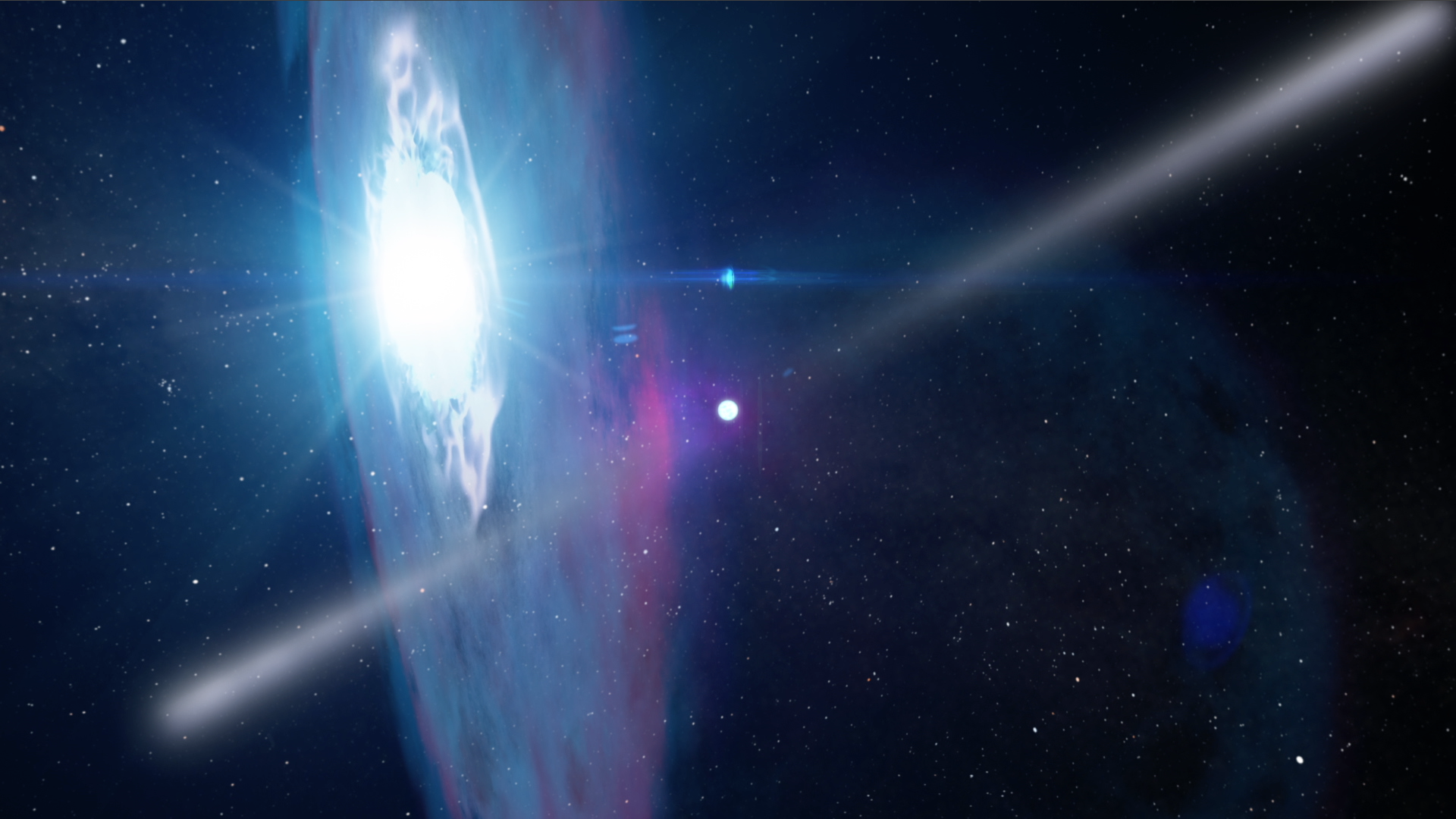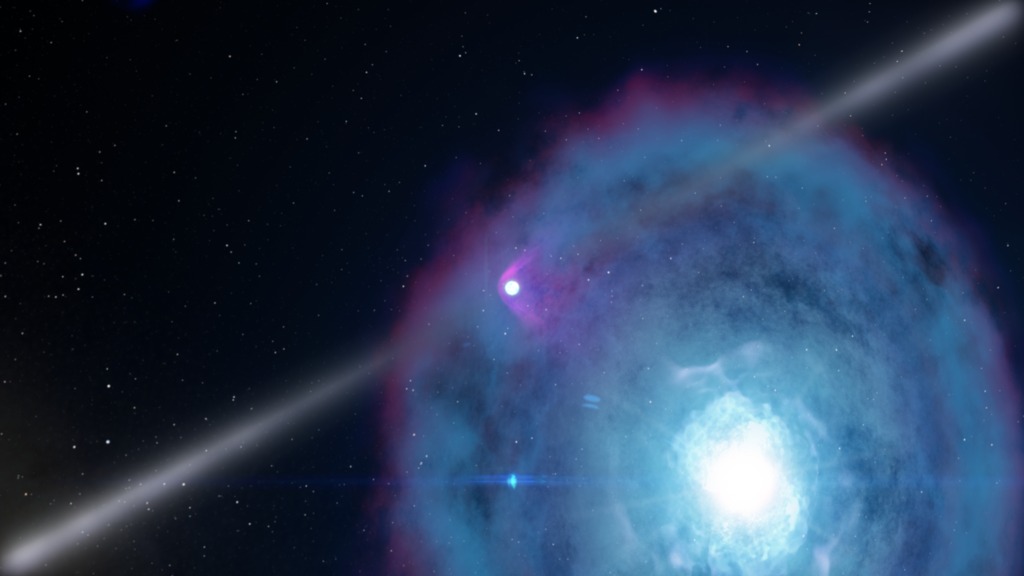Cosmic Fireworks

Astronomers predict high-energy explosions from a rare stellar encounter.
Astronomers are gearing up for high-energy fireworks when a stellar remnant the size of a city meets one of the brightest stars in our galaxy. The cosmic light show will occur when a pulsar discovered by NASA's Fermi Gamma-ray Space Telescope swings by its companion star. The pulsar, known as J2032+4127 (J2032 for short), is a magnetized ball about 12 miles across and weighing almost twice the sun's mass. Its companion, known as MT91 213, is a star 15 times the mass of the sun that’s embedded in a large disk of gas and dust. In early 2018, J2032 will plunge through the star’s disk. Scientists predict the encounter will produce intense emissions of gamma rays, the most energetic form of light. The event will help astronomers measure the massive star's properties. Explore the images to learn more.

Discovered in 2009, pulsar J2303 is the crushed core of a massive star that exploded as a supernova.

The pulsar follows an elongated orbit lasting about 25 years. It passes closest to its companion star, MT91 213, once each circuit.

In early 2018, the pulsar will plunge through the disk of gas and dust surrounding MT91 213.

Scientists expect the event will produce gamma ray emissions (magenta) around the time of closest approach.
For More Information
See NASA.gov
Credits
Please give credit for this item to:
NASA's Goddard Space Flight Center
-
Writer
- Francis Reddy (Syneren Technologies)
-
Animator
- Walt Feimer (HTSI)
-
Producer
- Scott Wiessinger (USRA)
-
Scientist
- Paul Ray (NRL)
Release date
This page was originally published on Thursday, December 31, 2015.
This page was last updated on Wednesday, May 3, 2023 at 1:49 PM EDT.

